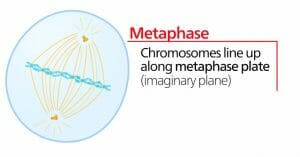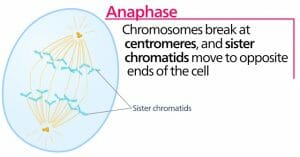Trisomy 21 Definition
Individuals carrying three copies of chromosome 21 in the cells of their body are said to have Down Syndrome or Trisomy 21. This is a genetic disorder that causes physical and intellectual developmental delays and occurs in 1 every 800 live births. Infants have an 85% chance of surviving the first year and nearly 50% of individuals with this syndrome have a life span exceeding 50 years.
The condition is named after Dr. John Langdon Down who first described the symptoms and identified the syndrome. The probability of having a child with Down’s syndrome increases with maternal age.
Causes of Trisomy 21
There are three major causes for Trisomy 21:
- Meiotic Nondisjunction
- Mitotic Nondisjunction
- Translocation
Meiotic Nondisjunction
Most animals that undergo sexual reproduction are diploid. That is, their somatic cells contain two copies of every gene and every chromosome. However, during reproduction, two gametes need to fuse to form a zygote. In order to maintain chromosome number from one generation to the next, gametes are formed with a single copy of each chromosome. These specialized cells are formed through meiosis where diploid precursor cells undergo two cycles of cell division to give rise to four haploid daughter cells. These daughter cells undergo differentiation to form gametes.
During each of these cell divisions, chromosomes are aligned in pairs along the metaphase plate.
They are then segregated to opposite poles of the cell during anaphase resulting in each pole receiving one chromosome of a pair.
There are a series of checkpoints that ensure that accurate segregation occurs and all four daughter cells receive a complete haploid set of chromosomes. However, when these systems fail, both chromosomes of a pair may migrate to the same end, giving rise to gametes that either have a missing chromosome or an extra copy of a chromosome. This is called a nondisjunction event.
If a gamete formed after a nondisjunction event contains two copies of chromosome 21 and participates in fertilization, it leads to an aneuploid zygote containing 47 chromosomes with three copies (trisomy) of the 21st chromosome.
Trisomy 21 is among the most common genetic birth defects, with nearly 5000 children being born worldwide with this condition each year. Some people with trisomy 21 could undergo ‘anaphase rescue’. In these individuals, when the aneuploid zygote divides mitotically, the extra chromosome moves slowly during anaphase and is not incorporated into the daughter cells. This leads to some cells reverting to the normal chromosome number of 46. This results in mosaicism, where the individual contains two distinct genetic populations. Since only a subset of cells in the body is aneuploid, the symptoms are milder in these individuals and the prognosis is usually better.
Mitotic Nondisjunction
Occasionally, trisomy 21 could arise after fertilization of two normal haploid cells. Early in development, a nondisjunction event could occur during mitosis. In these cases, a clonal population of cells arises which contains 47 chromosomes rather than 46. This is also a form of mosaic Down’s syndrome, and as with anaphase rescue, the clinical outcomes are usually better than those having Trisomy 21 in all their cells.
Translocation Down’s Syndrome
The most rare form of Trisomy 21 arises from the duplication of a short section of chromosome 21 with its translocation to another site within the nucleus. Therefore, there are three copies of some portions of the chromosome, and two copies of the remaining portions. This condition is not well understood, and the causes and mechanisms are not known.
Symptoms of Trisomy 21
Trisomy 21 has a wide range of distinctive symptoms from external characteristics to developmental delays. Children with trisomy 21 have broad, wide faces with eyes that slant upwards. They have reduced nasal bridges, short noses and small palms with short fingers. There is usually a large gap between their big toe and second toe. Their ears are also usually small and occasionally have a small fold at the top. An enlarged tongue combined with small arched palate and small chin often leads to obstructive sleep apnea.
When these external signs are observed, a chromosomal analysis is often recommended. Further investigations are needed to understand the extent of the condition.
Many children with Trisomy 21 have congenital heart defects, intestinal malformations, and sensory impairments. Some of these infants present with fluid in the ear, or contain nerve defects that affect their ability to hear well. They are often near or far sighted, occasionally having ‘crossed eyes’. They are susceptible to thyroid malfunctions. They also have a higher probability of developing leukemia and having impaired immune functioning.
As the child grows, there are developmental delays and there is usually mild to moderate intellectual disability. These infants crawl, sit, stand and walk later than usual. Currently, there are special growth charts for children with Down’s syndrome. Their speech and language development is slower and as adults, many have vocal abnormalities with disordered speech patterns. A rapid or erratic speech rhythm often makes them unintelligible. Their ability to understand language usually exceeds their vocalization. They can have learning difficulties, either due to reduced cognitive ability or due to restricted sensory capacity.
Some people with Trisomy 21 have problems with fertility. Women with Down’s syndrome are at high risk for undergoing spontaneous abortions.
Management of Condition
While there is no cure for this condition, early identification and therapy can help with learning and development, allowing these children to lead semi-independent lives. Regular medical follow-up to assess heart, eye, and ear functions can lead to early interventions and better long-term outcomes. Physical therapy is an important part of maintaining their bone health. Obesity is often a problem after adolescence and a proper diet and regular exercise are essential in managing Trisomy 21. A speech and language therapist can enhance communication skills and special preschool programs will allow these children to consider being a part of mainstream schools.
However, there is a wide range in the capabilities of people suffering from Down’s syndrome and it is often not possible to predict the outcome of an intervention. It is essential for caregivers to receive support and counseling as well.
Other Aneuploidy Disorders in Humans
Although nondisjunction could occur in any of the 23 pairs of chromosomes in a cell, many aneuploid zygotes are non-viable, leading to spontaneous abortions. Some lead to viable pregnancies only when present as mosaics. Trisomy 13 and trisomy 18 are other relatively common genetic disorders. Occasionally, aneuploidy can arise due to an abnormal number of sex chromosomes, with a direct impact on reproduction and fertility.
Related Biology Terms
- Aneuploidy – Presence of an unusual number of chromosomes in a cell, usually due to the addition or absence of one chromosome.
- Haploid – Cell containing one copy of each chromosome.
- Metaphase Plate – An imaginary plane running through the center of a cell, perpendicular to the spindle apparatus. It is the site for alignment of chromosomes during metaphase.
- Zygote – A fertilized ovum, or diploid cell formed by the fusion of two haploid gametes.
Quiz
1. Which of these can result in trisomy 21?
A. Meiotic nondisjunction
B. Mitotic nondisjunction
C. Chromosomal translocation
D. All of the above
2. Which of these external characteristics makes a medical professional suspect trisomy 21? Choose all that apply.
A. Broad, wide face with downward slanting eyes
B. Large ears with a flap on top
C. Large tongue with a small chin
D. Big gap between the big toe and second toe.
3. Which of these organ systems that could be affected by trisomy 21?
A. Cardiopulmonary system
B. Digestive system
C. Nervous system
D. All of the above


